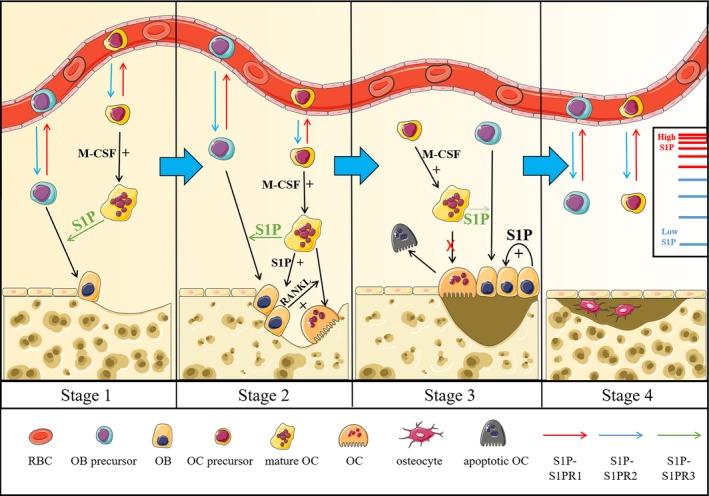Figure 1.

S1P plays an essential role in bone turnover and osteoporosis. One of the early signs of osteoporosis is obstacles to bone turnover, and the whole process of bone turnover can be divided into four stages. In the first stage, OCPs and OBPs recruit to bone marrow via S1PR2 signal pathway (these cells are mobilized into blood through S1PR1 signalling). And osteoclastic cell‐secreted S1P can stimulate the differentiation of osteoblasts. In the second stage, RANKL, cooperating with S1P, acts as a coupling factor for osteoclast‐osteoblast crosstalk, which facilitates bone turnover and maintains bone haemostasis. The differentiation of osteoblasts and the expression of RANKL are induced by S1P (released from osteoclastic cells), while the dissolution of bone matrix will release TGF‐β. In the third stage, the rapid proliferation of osteoblasts (induced by S1P in an autocrine manner) and the apoptosis of osteoclasts lead to the increase of OB/OC ratio, which eventually refill the dissolved bone matrix. In the last stage, the formation of new bone is complete and bone turnover will resume from the first stage
